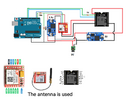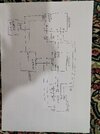I want to use dfplayer modules speaker output to connect to SIM800L MIC IN Pins.Can this being done? How to connect it?
In other words Instead of a MIC input on SIM800L module, I use the sound out of the dfplayer module.
Please see the attached file.
What is the reason for the noise? How can I fix the noise? Can you guide me by schematic?
Thanks
In other words Instead of a MIC input on SIM800L module, I use the sound out of the dfplayer module.
Please see the attached file.
What is the reason for the noise? How can I fix the noise? Can you guide me by schematic?
Thanks
Attachments
Last edited:



